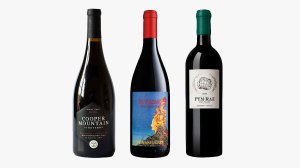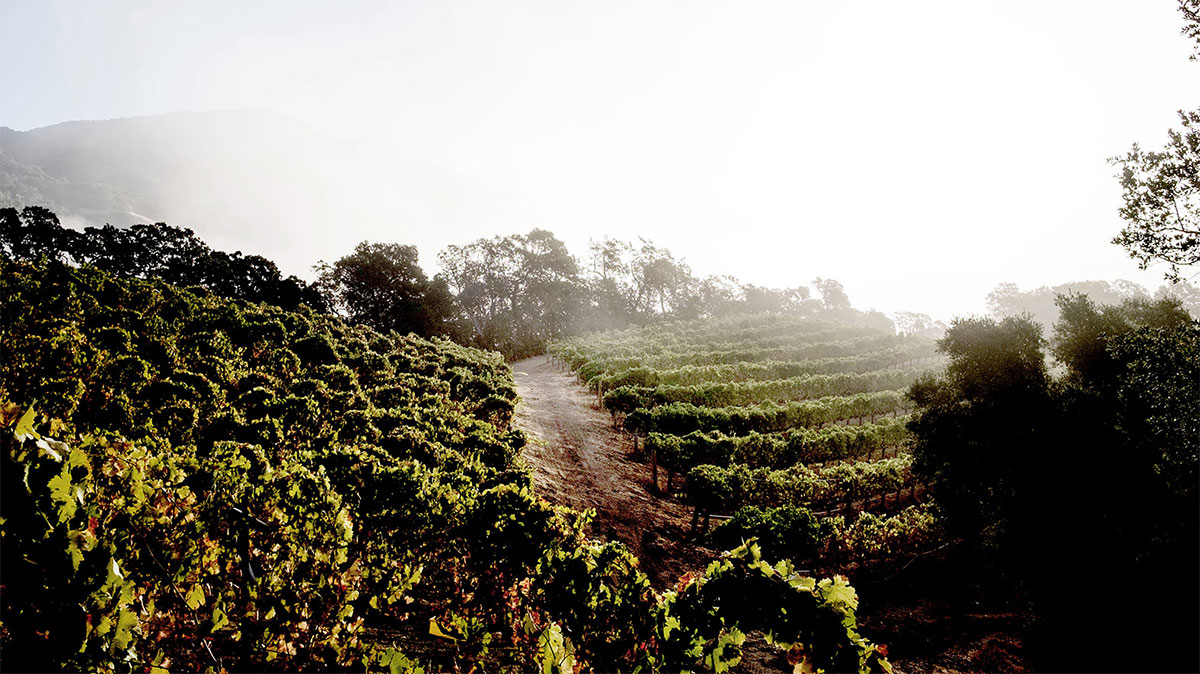This story is from an installment of The , our weekly insider newsletter to the world of fine .
It’s said that great wine is made in the vineyard, and that is especially true in the case of wines that are “dry farmed” or non-irrigated. Many wine regions, especially in Europe, do not allow irrigation of any vines older than three years or except in cases of severe drought, leaving plants to struggle to find available groundwater. While this would seem to have a negative effect on wine, the best grapes with the most concentrated flavors come from vines that have had to reach deep to remain hydrated. Dry-farmed vines with complex root systems are also best prepared to survive the rigors of unstable weather patterns, prolonged heat waves, and extremely dry summers.
Besides adding to vine health, it is important to note that this traditional agriculture method also improves the quality of grapes and finished wine. “We clearly get the real expression of the vineyard terroir in the wine. We achieve the full complexity, elegance, and structure that the grape can give us, especially with the mineral sensation and expression of the terroir,” says Chema Ryan, winemaker and technical manager at , who dry farms the Las Cruces, Colorao, and El Monte vineyards in Rioja where he grows Tempranillo and Viura for his red and white wines.
The word “terroir” pops up a lot in conversations about grapevines and even more so when talking about those that are dry farmed. “Wines made from non-irrigated grapes generally exhibit greater complexity and a richer aromatic profile, showcasing a better expression of the terroir,” says Marcella Bergese, hospitality manager at Damilano, where dry-farmed Nebbiolo grapes are vinified into Damilano Barolo DOCG Cannubi. Because the vines reach deeper into the soil to find water and can extract more nutrients along the way, “you use the entire depth of your terroir,” explains Fabrice Brunel, owner and winemaker of in Châteauneuf-du-Pape, who dry farms Grenache, Syrah, and Mourvèdre for his Les Cailloux bottling.

Dry farming can improve the quality of grapes and finished wine.
The effect on the grapes grown can be profound. “Dry farming results in lower yields, but the fruit that is produced shows greater concentration, balance, and purity,” Jérôme Ledit, general manager and winemaker at Napa Valley’s Tesseron Estate, tells Robb Report. The main reason for the greater concentration of flavors is reduced water volume in grapes—but smaller bunches, fewer bunches on the vine, and diminished berry size also contribute to more flavorful wine. Ledit grows Cabernet Sauvignon, Cabernet Franc, and Merlot in the estate’s vineyard, where the high altitude and increased winter rainfall eliminate the need for irrigation. “The wines reveal more minerality and a stronger sense of place, offering a vivid and authentic reflection of our terroir,” he says.
Allowing vines to struggle for water aids in their long-term health and helps them to survive whatever nature may throw their way. “The roots of an irrigated vine exist primarily within the first one to two feet of soil, the depth to which water from drip irrigation lines penetrates,” says Rory Williams, director of winemaking and viticulture at Frog’s Leap. Meanwhile, “a dry-farmed vine can—and must—send its roots deep into the soil, sometimes more than 30 feet deep, in order to survive,” he explains. Williams dry-farms approximately 180 acres in the Rutherford and St. Helena sub-AVAs of Napa Valley, including three vineyards in which he grows grapes for Frog’s Leap Estate Cabernet Sauvignon alongside many other varieties. Williams also points out that “dry farming isn’t simply about turning off the water in a vineyard,” because if you did that, vines that had not been adequately prepared would simply die. “Dry farming is about everything we are doing to make sure that the vines don’t need any additional water,” he says. “To make this happen, you have to cultivate a healthy, balanced soil that supports the vine throughout our long dry season.”
As regular weather cycles and available water resources have become less dependable, winemakers rely on the resilience of their vines to produce quality grapes season after season. “Because of climate change, water scarcity is becoming more prevalent. The good news is vines can handle drought periods very well if farmed in accordance,” says Barbara Gross, co-owner of Cooper Mountain Vineyards in Oregon’s Willamette Valley. Although there are no regulations banning irrigation here, Gross dry farms all her estate vineyards, where she cultivates a wide range of varieties, including the grapes for her Cooper Mountain Old Vines Pinot Noir. Gross doesn’t just think that this style of farming is a good choice for winemaking; she believes that dry farming is “a moral duty of winegrowers to save the water for other farmers growing nutritional crops,” she says.
Although the dedication to dry farming is a new development in a wine world that was once awed by the technological advances of the 20th century, Antonio Rallo, fifth-generation owner and winemaker at Sicily’s Donnafugata, reminds Robb Report that it is a “millennia-old practice,” especially on the volcanic slopes of Mount Etna, where he farms Nerello Mascalese grapes for Donnafugata Sul Vulcano Etna Rosso. “This low-intervention approach is a time-honored, traditional way of working the slopes of Etna,” Rallo says. “It promotes vine health and allows the terroir to express itself fully.” Dry farming on Etna depends on the highly porous volcanic soils that absorb and retain rainwater deep below the surface, and Rallo believes that even if he could irrigate—a practice that is forbidden here—his wine would lose its character. “Roots would adapt to the watered zones, exploring less of the available soil, and the wines might lose some of their mineral intensity,” he says.
Williams points out that at Frog’s Leap, “dry farming is an indispensable tool in our approach to wine quality,” which is, after all, the most important factor to those whose sole immersion in the wine industry is enjoying the fruit of the vine. This old-school method leads to wines that exhibit freshness, elegance, and balance. It is true that great wine is made in the vineyard, and it’s a pleasure and privilege when it winds up in your glass.
Do you want access to rare and outstanding reds from Napa Valley? .
Authors
-
Mike DeSimone and Jeff Jenssen
Mike DeSimone and Jeff Jenssen, also known as the World Wine Guys, are wine, spirits, food, and travel writers, educators, and hosts. They have been featured guests on the Today Show, The Martha…
Credit: robbreport.com










